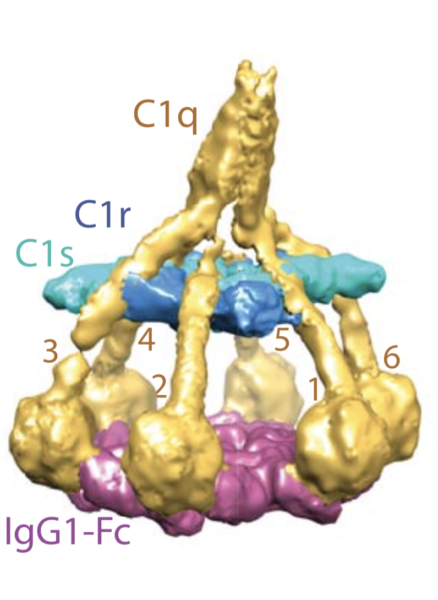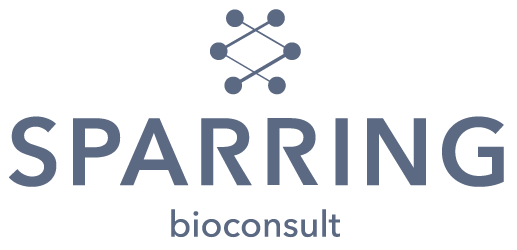Our immune system is continuously on the lookout for intruders (e.g. bacteria or viruses) or rogue cells (e.g. infected, damaged or cancerous cells) that represent a potential danger to our health. Sentinel proteins, such as the complement protein C1, play a critical role in this surveillance as it scans our blood and tissues for danger signals. Compare it to a neighborhood watch looking out for bad elements. One of the patterns that C1 is alerted by is groups of antibodies marking the surface of a pathogen or a cancer cell.
In a study led by Thom Sharp, Paul Parren and Piet Gros published in the leading journal Science, it is demonstrated that antibodies organise in hexameric rings consisting of groups of six antibodies. These rings represent a danger pattern for the immune system. Docking of C1 on the hexamer requires its arms to bend which in its turn allows the protease C1r to approach, cleave and activate its target C1s. This first step in activation of the complement cascade may thus take place through rearrangements occurring in a single C1-antibody hexamer complex.
However, we found that complement activation may also occur through a second mechanism in which multiple C1 -antibody hexamer complexes are involved. Using cryo-electronmicroscopy we observed that antibody hexamers do not evenly distribute over a surface, but instead exist in packs together. This allows C1r proteases to interact and activate C1s in C1 molecules that are in close vicinity when bound to neighboring hexamers.
Triggering of the complement cascade sounds a general immune alarm which leads to the attraction of effector cells as well as to the generation of cytotoxic protein complexes that attack the intruder.

Figure: An image taken with a powerful electron microscope, which shows a molecule of C1 bound to an antibody hexamer (purple). The arms of C1 (gold) bend to allow its globular heads to bind the antibody platform. This compaction puts a strain on blue/green protease platform leading to activation. From: Deniz Ugurlar, Stuart C. Howes, Bart-Jan de Kreuk, Roman I. Koning, Rob N. de Jong, Frank J. Beurskens, Janine Schuurman, Abraham J. Koster. Thomas H. Sharp, Paul W. H. I. Parren, and Piet Gros. Science 359: 794-797 (2018).
